
This section describes a version of the game that can be played immediately. Player setup and cards are removed for simplicity's sake.
The full instructions explain every option players have.

The Board is made up of an 11 x 11 grid of hexagonal cells. Each hexagon is referred to as a cell. Rows are delineated by the numbers 1-11, columns by the letters A-K. Pieces are indicated on the board by letters(this is a place holder). Which player pieces belong to are indicated by white letters for player 1, black for player 2.
Players have 6 cards. Cards indicate a type of piece and provide information on it, they serve no other role. Pieces are unique in the way they can move and their no summoning zone(explained in next section). Summoning a piece to the board(putting it on the board) requires mp. Players start the game with 200 mp.
Zones are cells on the board with rules on how pieces can interact with them. A piece’s Movement Zone is where it can move(explained in depth in a later section). A piece’s
No Summoning Zone is where your opponent cannot summon a piece in any way. A piece’s Starting Cell is the cell it occupies at the start of a turn.
Both player’s first turn is used to construct their starting position. During their subsequent turns, a player can either summon a piece anywhere on the board(except their opponent’s No Summoning Zones), move a piece, or sacrifice their pieces.
Pieces are captured(taken off the board by an opponent) if an opponent piece moves into the cell it occupies. A player wins if their opponent has no queens on the board. The game is a draw if Queens are the only type of piece which can move on the board.
Sacrificing is a way for a player to remove their own pieces from the board. Sacrifices must be within 2 cells of each other.
Movement is similar to chess in that pieces can either “leap” to cells or they have a path of cells. A path is a straight line of cells connecting from a piece’s starting cell. A piece can have up to 6 paths(for each side of its starting cell). If another piece is within a path, you cannot move that piece past the obstruction.
Movement cells that are not part of any of a piece’s paths, can be leapt to(placed on) as long as another one of your pieces is not already occupying it(see other rules). In the following examples, green colored cells indicate where that piece can be moved to. The purple cell indicates the starting cell. Letters indicate pieces(see Notation). Take note of which piece belongs to which player(see The Board).
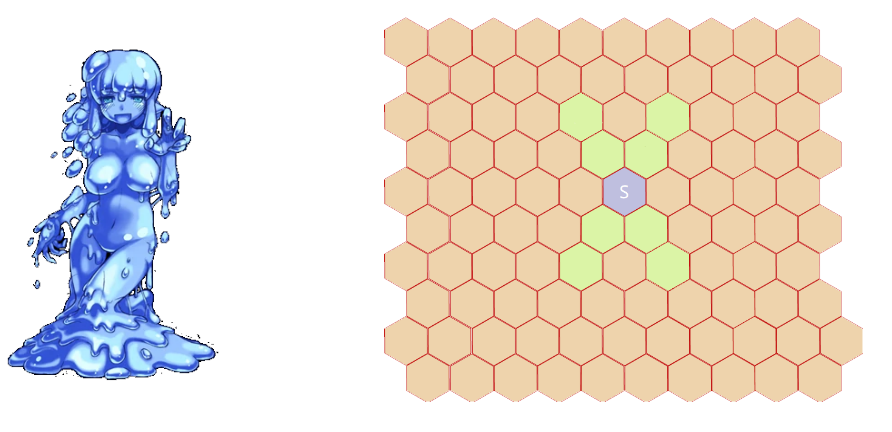
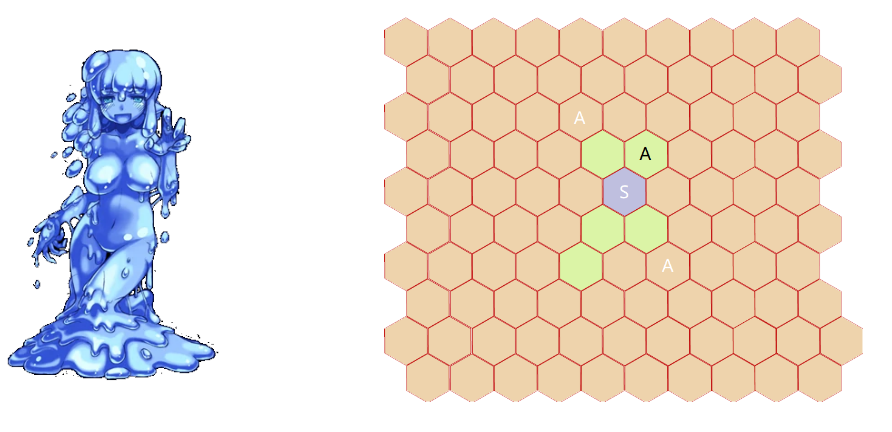
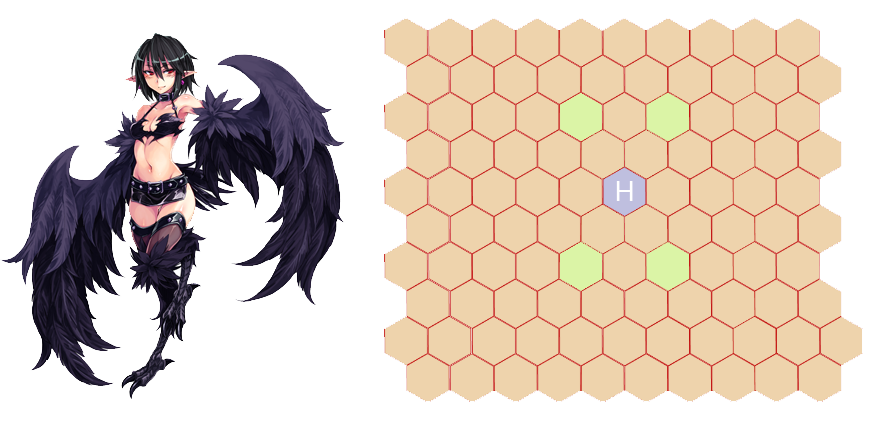

1. A player can have up to 10 of one type of piece on the board at once.
2. A player can summon a queen twice during a game, including the free one on the first turn.
4. Pieces cannot be summoned in an occupied cell.
5. A player cannot capture their own pieces.
6. Players can only sacrifice exactly 2 pieces during their turn
(All Art and visuals are place holder) Two colors on one cell indicates an overlap of zones.



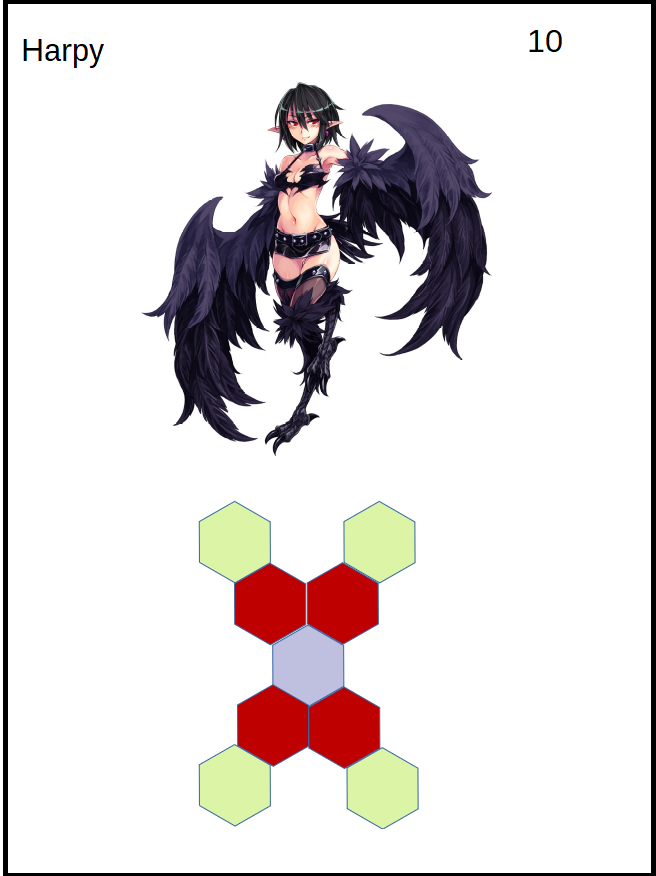
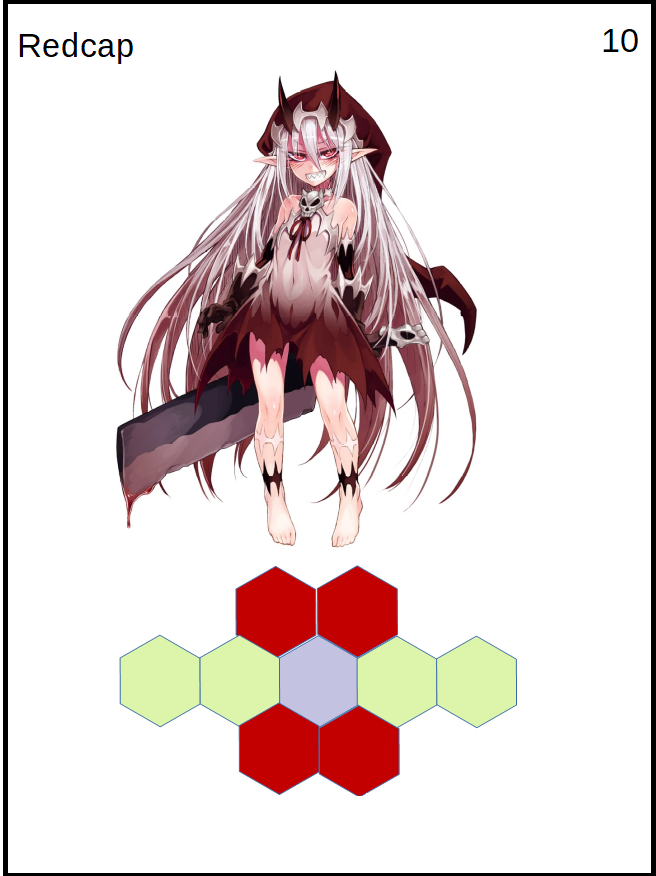
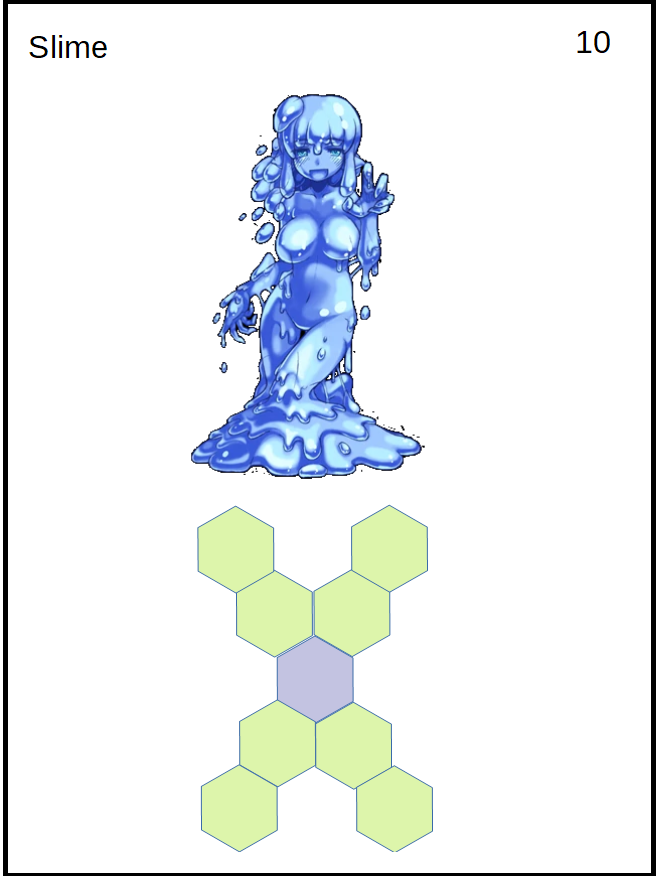


A – Apprentice coordinate-coordinate – moving a piece I – Iron Maiden *coordinate - summoning a piece H – Harpy coordinate~coordinate – capturing a piece S – Slime coordinate’coordinate - sacrificing pieces Rc – Redcap Q – Queen
3. A b1-b2 |150 The apprentice on b1 moves to b2 4. A*c3 |148 An apprentice is summoned to c3 5. A b2~c3 |150 The apprentice on b2 captures the piece on c3 6. A'a3 A'b3 |148 The apprentices on a3 and b3 are sacrificed
One after another, insert the following into the text box and press enter.
p1: [[0, 1, 4, 5, 6, 16], 1]Under the Game drop down menu, select the New option, and which player you are in the pop-up menu that appears. Then close this menu.
One after another, insert the following into the text box and press enter.
A*b3, A*d3, A*f3, A*h3, A*j3, I*b2, I*d2, I*f2, I*h2, I*j2, Rc*c2, Rc*i2, Q*a1, A*b1, A*a2, S*a3